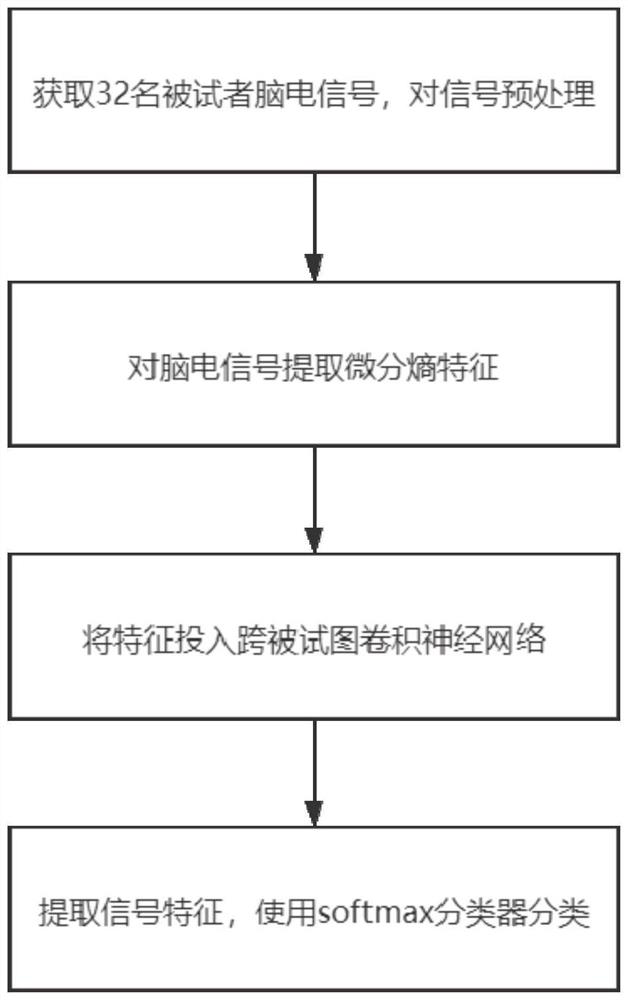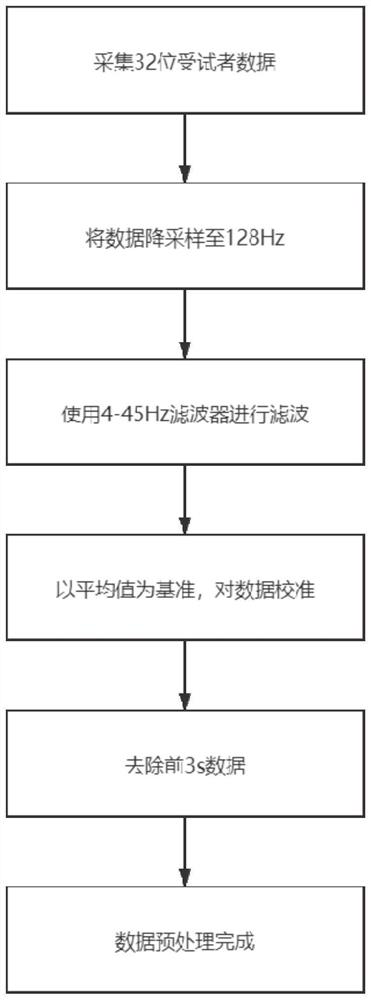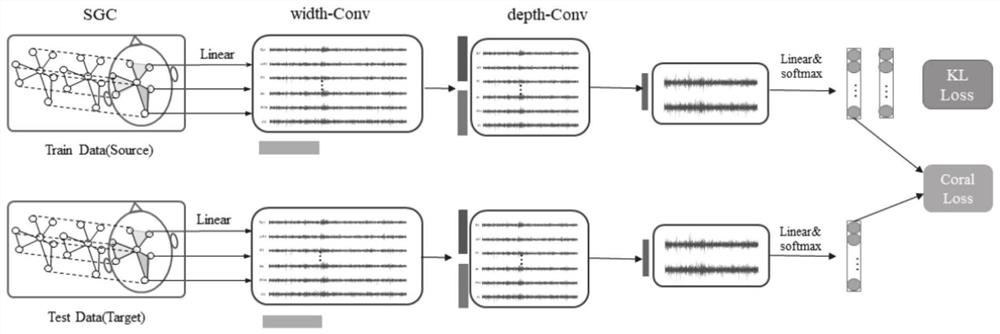Electroencephalogram emotion recognition method and system based on depth domain self-adaption
An emotion recognition and self-adaptive technology, applied in the field of EEG emotion recognition, can solve the problems of not meeting the recognition accuracy rate, not taking into account the channels of the individual differences of the EEG signals of the subjects, etc., so as to achieve accurate and accurate EEG emotion recognition results. The effect of reducing variance
- Summary
- Abstract
- Description
- Claims
- Application Information
AI Technical Summary
Problems solved by technology
Method used
Image
Examples
Embodiment 1
[0043] The present embodiment 1 provides a kind of EEG emotion recognition system based on depth field adaptation, the system includes:
[0044] An acquisition module, configured to acquire the EEG signal to be identified;
[0045] The recognition module is used to process the acquired EEG signals by using a pre-trained recognition model to obtain an EEG emotion recognition result; wherein, the pre-trained recognition model is obtained by training a training set, and the training set includes multiple The EEG signals of different subjects and the labels of the emotional categories of the EEG signals;
[0046] Wherein, when the pre-trained recognition model processes the EEG signal, it extracts the differential entropy feature of the EEG signal, extracts the topological structure between the EEG signal channels based on the differential entropy feature, and extracts the feature based on the topological structure. Local information, based on the local information, the model rel...
Embodiment 2
[0102] combine figure 1 with Figure 4 As shown, in the present embodiment 2, a kind of EEG emotion recognition method based on cross-subject graph convolutional network is provided, comprising the following steps:
[0103] Step 1. Create a dataset
[0104] The public DEAP database was used, which was collected by experiments by Koelstra and others from Queen Mary University of London, University of Twente, University of Geneva, Switzerland, and the Swiss Federal College to study the diversity of human emotional states. channel data. The database is based on the physiological signals generated by the stimuli evoked by music video materials. It records 32 subjects, watching the physiological signals of 40 minutes of music videos (each music video is 1 minute) and the subject's Valence, Arousal, Dominance of the video. , Likening's psychological scale, and also included videos of the facial expressions of the top 22 participants. The database can study physiological signals ...
Embodiment 3
[0145]Embodiment 3 of the present invention provides a non-transitory computer-readable storage medium. The non-transitory computer-readable storage medium is used to store computer instructions. When the computer instructions are executed by a processor, the above-mentioned depth-based A domain-adaptive EEG emotion recognition method, the method comprising:
[0146] Obtain the EEG signal to be identified;
[0147] The acquired EEG signal is processed by using a pre-trained recognition model to obtain the EEG emotion recognition result; wherein, the pre-trained recognition model is obtained by training a training set, and the training set includes brains of a plurality of different subjects. Labeling of electrical signals and emotional categories of EEG signals;
[0148] Wherein, when the pre-trained recognition model processes the EEG signal, the differential entropy feature of the EEG signal is extracted, the topological structure between the EEG signal channels is extracte...
PUM
 Login to View More
Login to View More Abstract
Description
Claims
Application Information
 Login to View More
Login to View More - R&D
- Intellectual Property
- Life Sciences
- Materials
- Tech Scout
- Unparalleled Data Quality
- Higher Quality Content
- 60% Fewer Hallucinations
Browse by: Latest US Patents, China's latest patents, Technical Efficacy Thesaurus, Application Domain, Technology Topic, Popular Technical Reports.
© 2025 PatSnap. All rights reserved.Legal|Privacy policy|Modern Slavery Act Transparency Statement|Sitemap|About US| Contact US: help@patsnap.com



